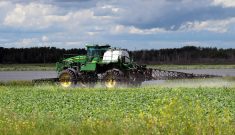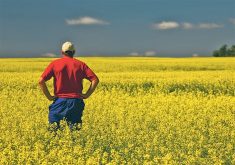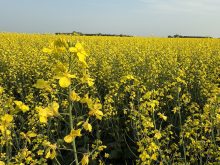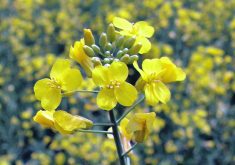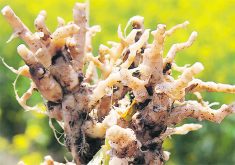WINNIPEG — Providing advice on how to successfully grow a crop is much easier than doing it.
Keith Gabert, a Canola Council of Canada agronomist in Alberta, is fully aware of that distinction.
Related stories:
In an ideal world, growers should seed canola about one inch deep into warm, moist soil. Under those conditions, the canola should germinate quickly and grow rapidly.
Read Also

New coal mine proposal met with old concerns
A smaller version of the previously rejected Grassy Mountain coal mine project in Crowsnest Pass is back on the table, and the Livingstone Landowners Group continues to voice concerns about the environmental risks.
But the world is not ideal.
“That’s easy to say, for me, sitting on my office chair on April 1,” said Gabert, who works out of Innisfail, just south of Red Deer, Alta. “(The) reality in the field might be a little different.”
While conditions are rarely perfect for seeding, growers can tweak seeding practices to combat flea beetles, the No. 1 pest of canola.
In an infographic released in April, the canola council encourages farmers to “stand up to flea beetles” with agronomic practices that will lead to higher plant densities.
“Canola crops that establish quickly and have five to eight plants per sq. foot usually face minimal risk from flea beetle feeding,” says the CCC. “A plant population at the high end of that range will mean more plants for a fixed number of flea beetles. That means fewer beetles per plant.”
The premise is logical. If there are more canola plants and the same number of beetles, then each plant will suffer less damage. If there are few plants and they’re developing too slowly, damage can be severe.
Every spring it’s almost guaranteed that flea beetles will “chew apart” canola fields in a particular region of the Prairies, Gabert noted, “(but) I just don’t know where … until it happens.”
Weather conditions in spring have a large influence on canola plant densities. It’s impossible to control the weather, but growers can control seeding rate, depth and timing.
“A little more precision at seeding time is always a good thing,” Gabert said.
Growers often ask him about the recommended seeding rate. That isn’t easy to answer because of the variables.
“It’s typically dictated by seedbed conditions and moisture. (You have to) dig in with your toe into the ground the day that you’re planting.”

Instead of focusing on seeding rate, the council recommends a target of 10 seeds per sq. foot. At that density, and if emergence is 50 to 75 percent, growers should realize five to eight plants.
Most growers understand that seed size will affect the number planted in a sq. foot, but the council has a useful reminder on its website.
Thousand seed weight (TSW) is used as a proxy for seed size. It can vary from 3.5 to 6.5 grams per 1,000 seeds. The higher the weight, the larger the seed, which affects the number of plants per sq. foot.
“(Picking) a canola seeding rate without first considering the TSW… means the variability in seed weights will not be accounted for,” the CCC says.
“For example, if seed weighs six grams per 1,000 seeds … and a grower seeds at four pounds per acre, they will only be planting … approximately six seeds per sq. foot. At 50 percent emergence, the stand will have only … three plants per sq. foot, which is insufficient.”
To help growers avoid a low plant density, the council has a seeding rate calculator on its website.
Research has proven that early seeding will result in higher yields but some entomologists suggest that growers seed a bit later to avoid flea beetles.
Insect experts used to recommend seeding early so the crop could get ahead of crucifer flea beetles. But over the last 10 to 15 years, striped flea beetles have become more common on the Prairies. They emerge two or three weeks earlier than crucifers and the previous recommendation on early seeding may be outdated.
“I wouldn’t say that anymore. I might even say seed a little bit later,” said Tyler Wist, field crop entomologist with Agriculture Canada. “Why is that? Your ground is warmer, your plant comes up quicker. It takes up the insecticide better from the seed treatment. And it’s not sitting around … in a vulnerable stage.”
However, it’s not a black and white situation.
There are years when early-seeded canola emerges quickly in the spring and flea beetles are not a problem.
“There isn’t a solid answer,” Gabert said. “(But) if you can get three to four leaves on your canola, in three to four weeks, we shouldn’t have much for flea beetle concerns.”
Growers can make the right choices at seeding, but adverse weather after planting can deter plant establishment and development, so it’s critical to check canola fields after seeding to assess whether a foliar spray for flea beetles is needed.
“It’s easy to get distracted. The most vulnerable time for that crop … is the one-leaf stage,” Gabert said.
“But it seems like growers are (usually) seeding some other crops when flea beetles are chewing apart the canola they’ve already got in the ground…. If it gets warm and flea beetles are eating, regardless of whatever task you are doing on the farm, you should prioritize scouting canola as well.”







